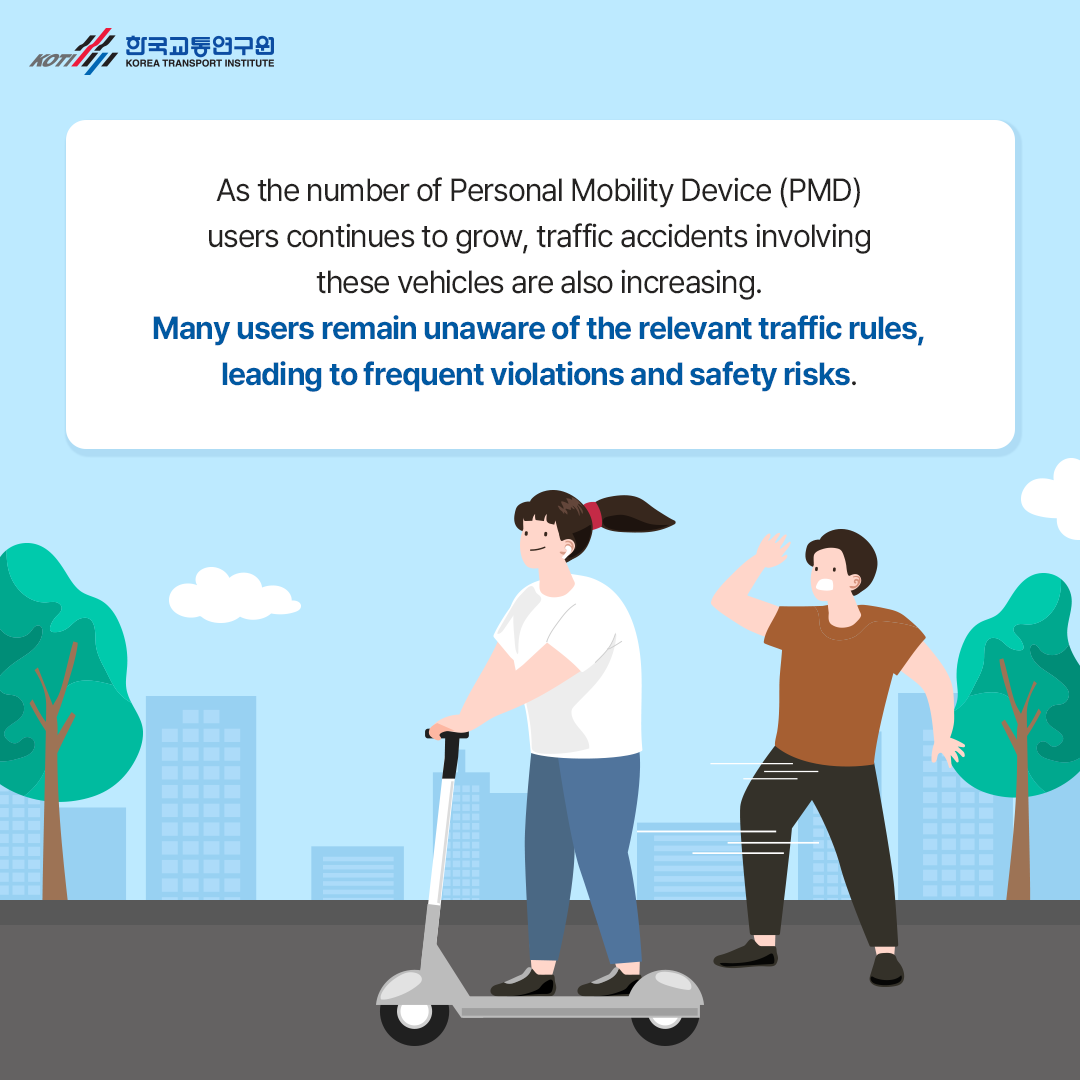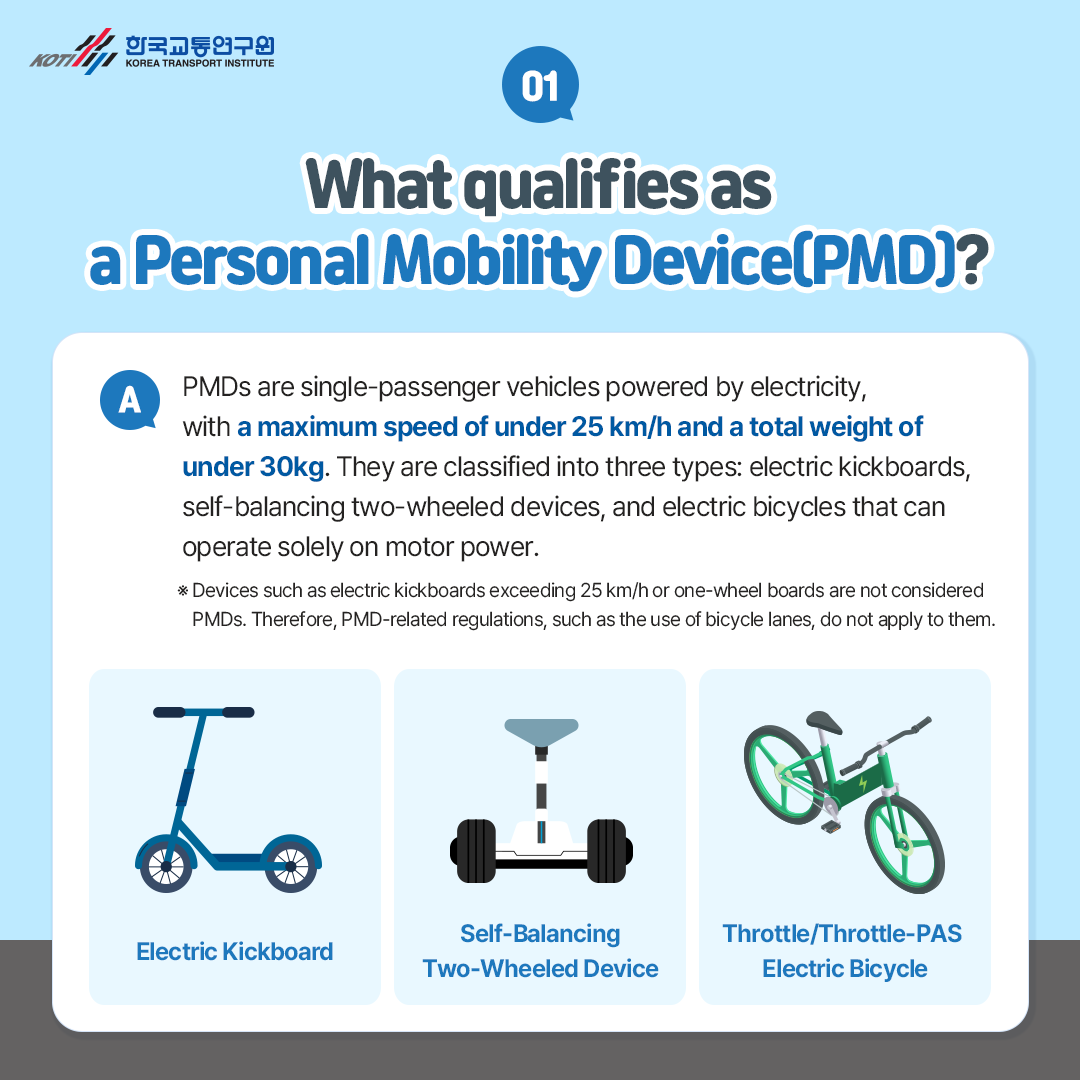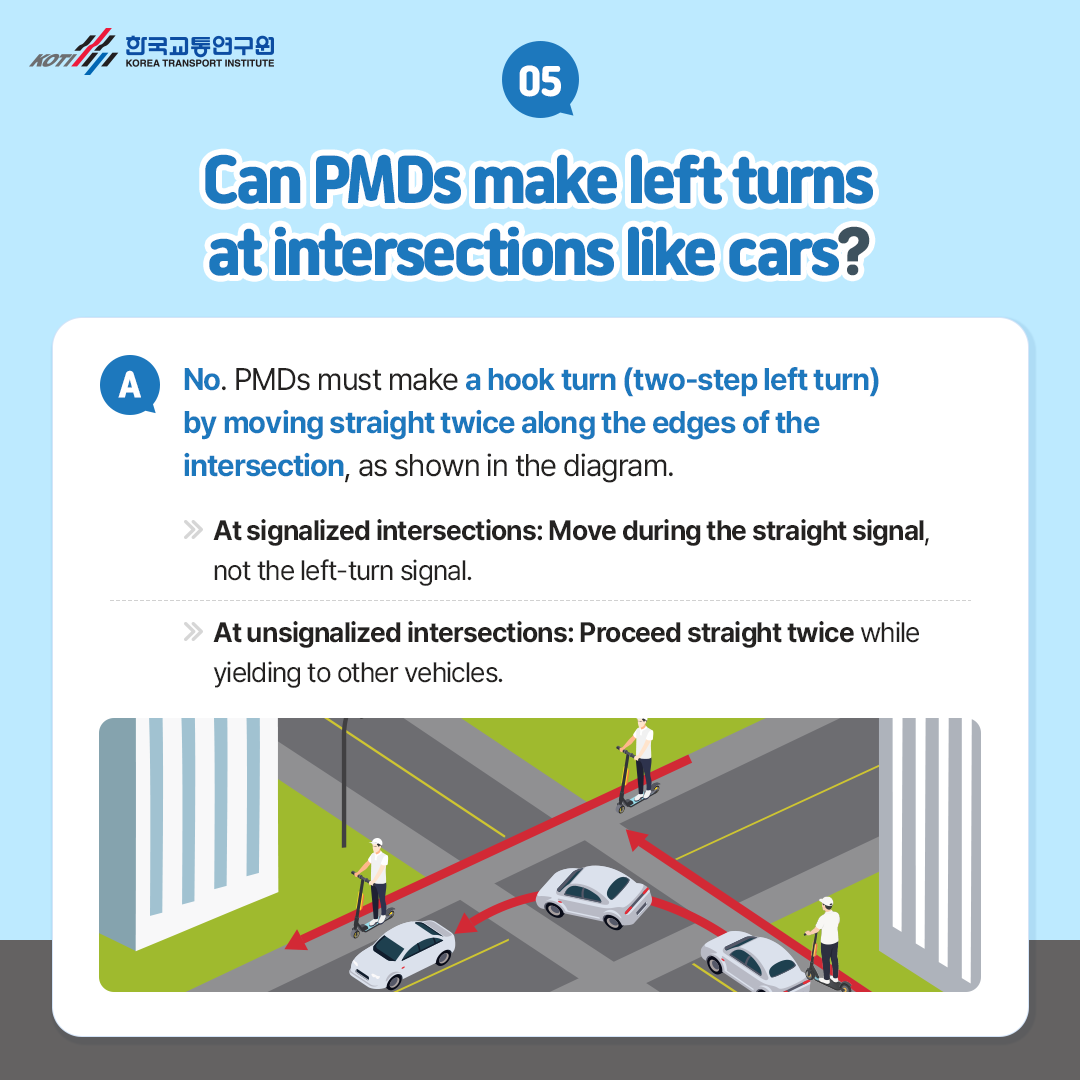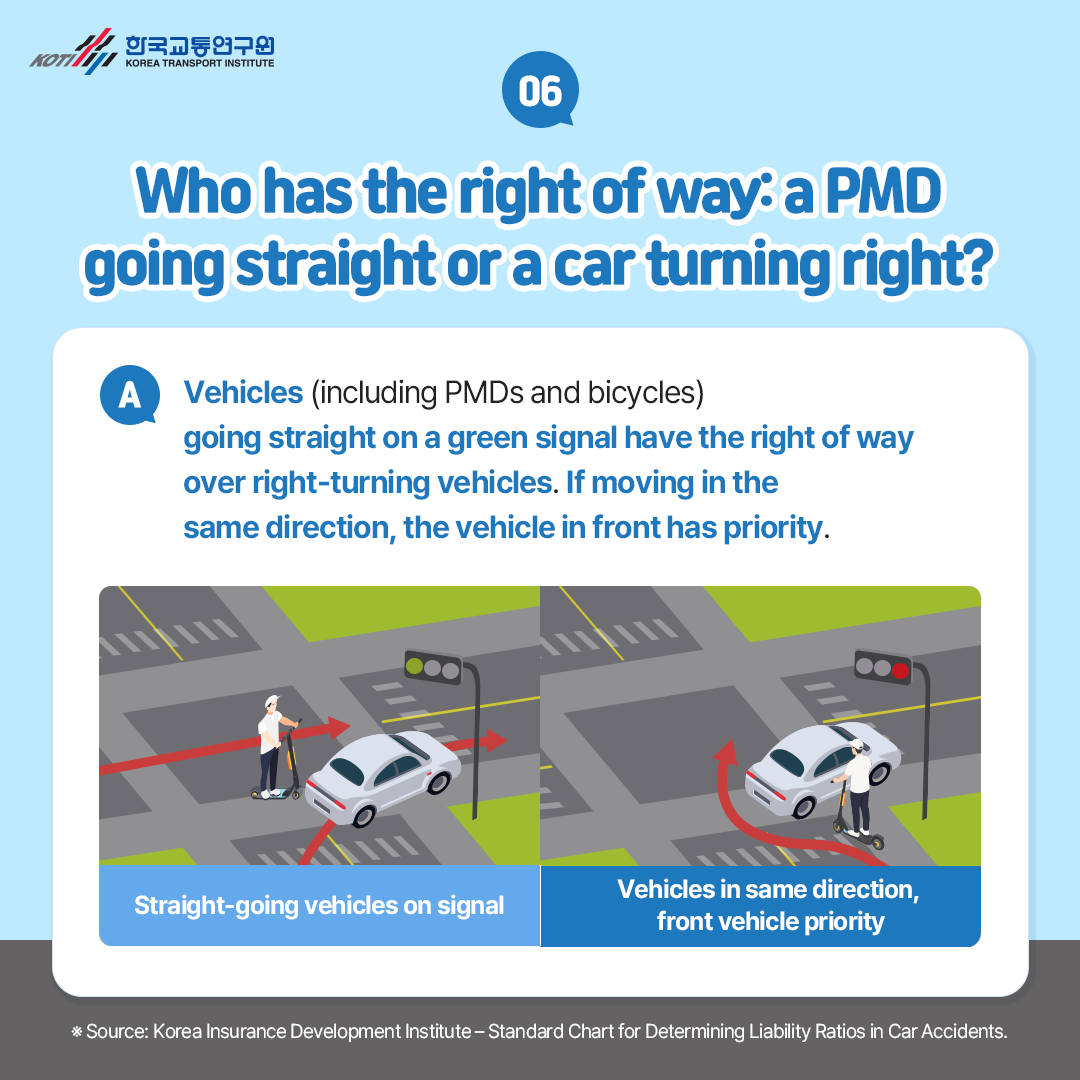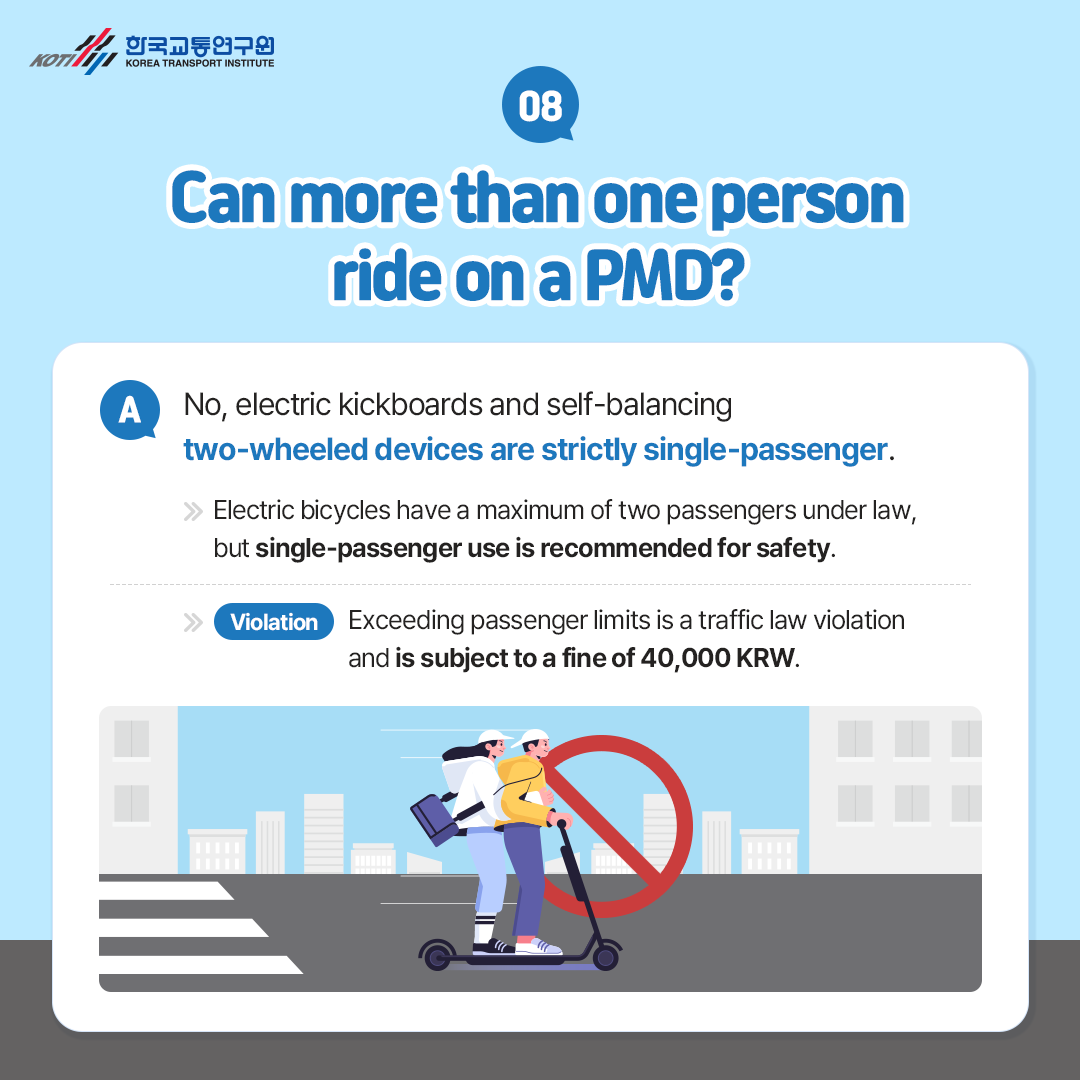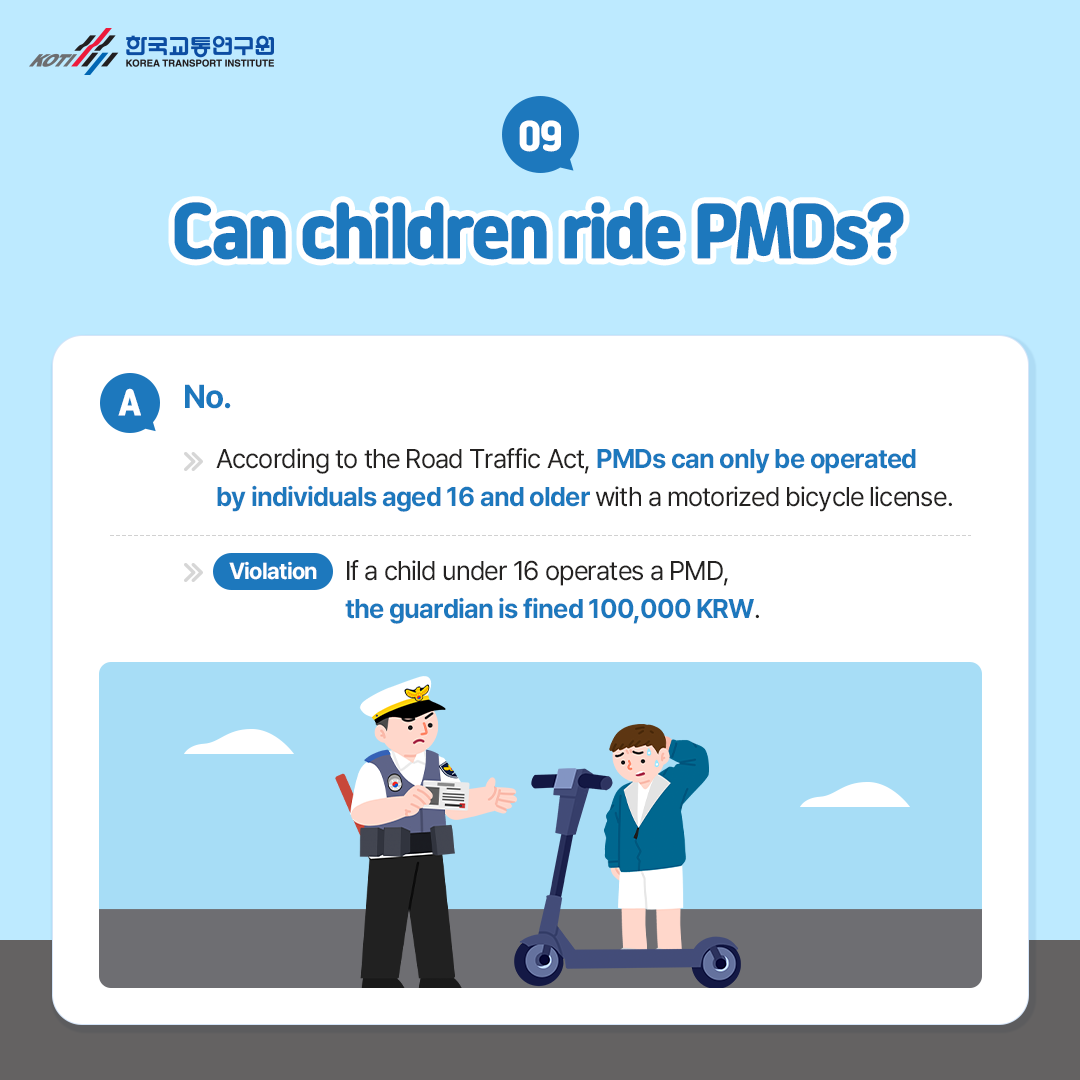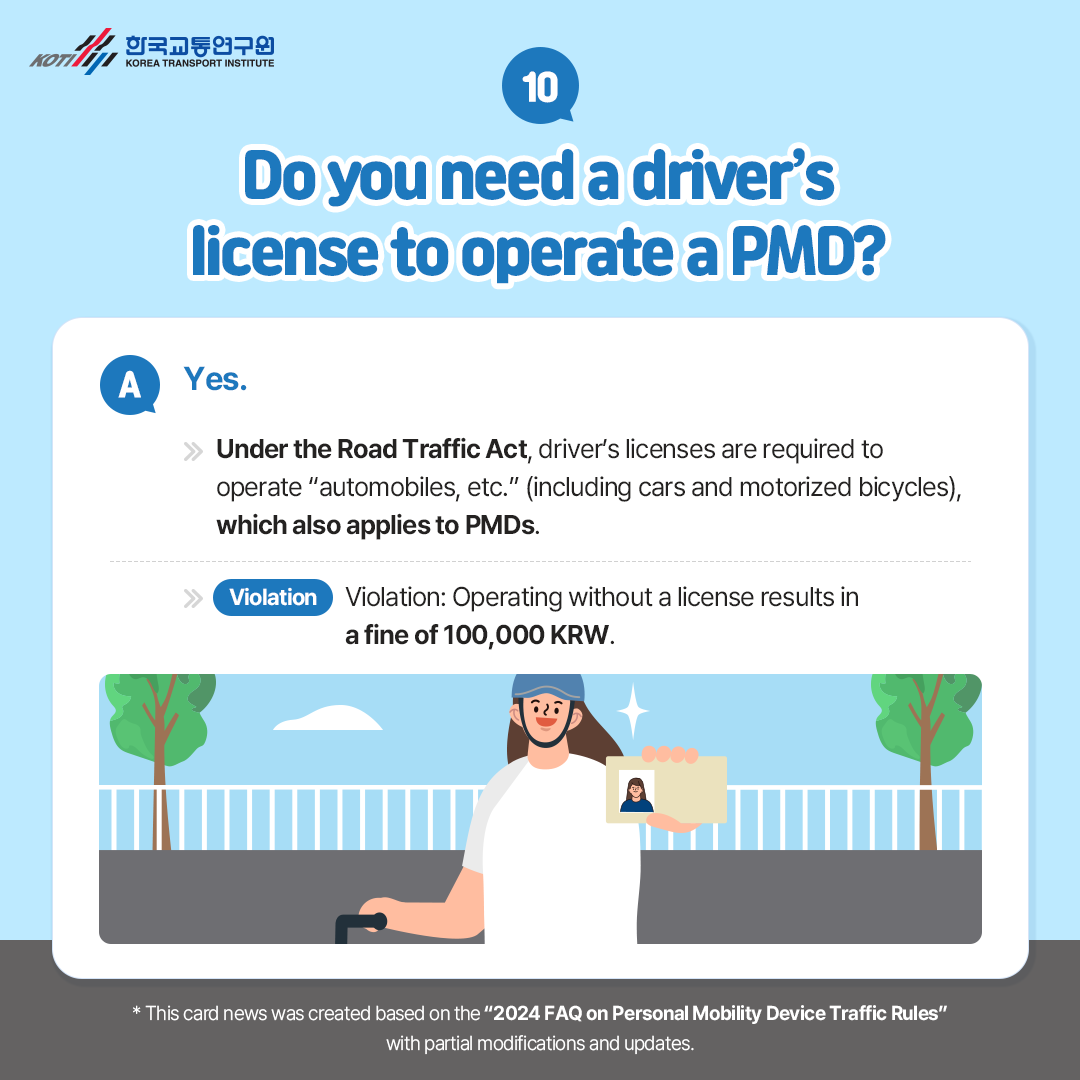Card News

NEWS
KOTI - Korea Transport institute
Feeds and Updates
Frequently Asked Questions (FAQ) on Personal Mobility Devices (PMDs)
September29 2025
-
As the number of Personal Mobility Device (PMD) users continues to grow, traffic accidents involving these vehicles are also increasing.
Many users remain unaware of the relevant traffic rules, leading to frequent violations and safety risks.
Q1. What qualifies as a Personal Mobility Device (PMD)?
A. PMDs are single-passenger vehicles powered by electricity, with a maximum speed of under 25 km/h and a total weight of under 30 kg. They are classified into three types: electric kickboards, self-balancing two-wheeled devices, and electric bicycles that can operate solely on motor power.
※ Devices such as electric kickboards exceeding 25 km/h or one-wheel boards are not considered PMDs. Therefore, PMD-related regulations, such as the use of bicycle lanes, do not apply to them.
(Examples: Electric Kickboard, Self-Balancing Two-Wheeled Device, Throttle/Throttle-PAS Electric Bicycle)
Q2. On which part of the road’s right-hand side can PMDs be operated?
A. PMDs must travel on the right side, within half (1/2) of the width of the rightmost lane.
- In case of accidents: If an accident occurs outside this area, the PMD rider’s share of liability may increase.
- Although the exact boundaries are not explicitly defined in law, the police interpret the rightmost half-lane as the designated area.
Q3. Can PMDs use lanes other than the rightmost lane?
A. No.
- Under the Road Traffic Act Enforcement Regulations, each lane permits only certain vehicle types. PMDs are restricted to the rightmost lane of the roadway.
Q4. Can PMDs cross at crosswalks while being ridden?
A. No. PMDs must be pushed by hand when crossing at pedestrian crosswalks.
※ At bicycle crossings, PMDs may be ridden across.
< If a PMD is pushed across a pedestrian signal, the car bears 100% liability in the event of an accident.>
※ Source: Korea Insurance Development Institute – Standard Chart for Determining Liability Ratios in Car Accidents.
Q5. Can PMDs make left turns at intersections like cars?
A. No. PMDs must make a hook turn (two-step left turn) by moving straight twice along the edges of the intersection, as shown in the diagram.
- At signalized intersections: Move during the straight signal, not the left-turn signal.
- At unsignalized intersections: Proceed straight twice while yielding to other vehicles.
Q6. Who has the right of way: a PMD going straight or a car turning right?
A. Vehicles (including PMDs and bicycles) going straight on a green signal have the right of way over right-turning vehicles. If moving in the same direction, the vehicle in front has priority.
< Straight-going vehicles on signal → priority, Vehicles in same direction → front vehicle priority>
※ Source: Korea Insurance Development Institute – Standard Chart for Determining Liability Ratios in Car Accidents.
Q7. Is it illegal for two PMDs to ride side by side? Can they overtake?
A. Riding side by side (parallel riding) is illegal. Overtaking is permitted.
- On bicycle roads with two or more lanes in the same direction, one PMD per lane is allowed.
※ Parallel riding is legal only where this sign is posted.
Q8. Can more than one person ride on a PMD?
A. No, electric kickboards and self-balancing two-wheeled devices are strictly single-passenger.
- Electric bicycles have a maximum of two passengers under law, but single-passenger use is recommended for safety.
- Violation: Exceeding passenger limits is a traffic law violation and is subject to a fine of 40,000 KRW.
Q9. Can children ride PMDs?
A. No.
- According to the Road Traffic Act, PMDs can only be operated by individuals aged 16 and older with a motorized bicycle license.
- Violation: If a child under 16 operates a PMD, the guardian is fined 100,000 KRW.
Q10. Do you need a driver’s license to operate a PMD?
A. Yes.
- Under the Road Traffic Act, driver’s licenses are required to operate “automobiles, etc.” (including cars and motorized bicycles), which also applies to PMDs.
- Violation: Operating without a license results in a fine of 100,000 KRW.
* This card news was created based on the “2024 FAQ on Personal Mobility Device Traffic Rules,” with partial modifications and updates.

